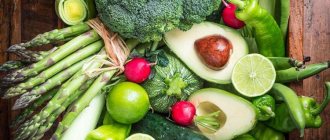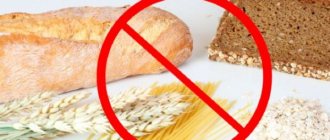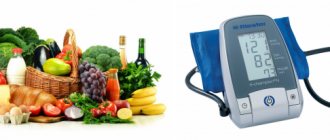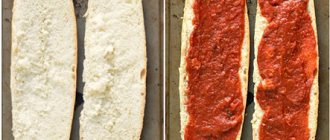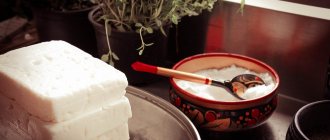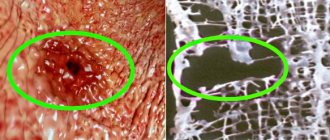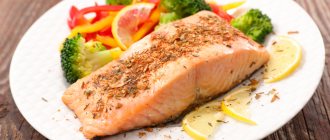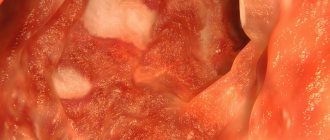The acid-base balance of the human body is very important for health. Only at an optimal pH level (in the range of 7.3-7.5) are we protected from pathological processes and infections. The functioning of all systems and organs directly depends on this indicator; its fluctuations are very harmful. Drinking regime, physical activity and alkaline nutrition will help maintain the desired state - detailed information about the products in the menu is provided. Remember that you need to plan your diet consciously in order to observe favorable changes in the body over time and not harm the body. The priority should be a balanced diet, which should be prepared following the recommendations of specialists. Only by observing a careful ratio of components can excellent results be achieved.
Reasons for violation
The correct balance may shift towards acidification (acidosis) or excessive alkalization (alkalosis). The most common is the first option, in which a person’s blood becomes highly acidic. This negatively affects biochemical processes, the functioning of the immune system, and the functioning of all organs.
Changes in the acid level of the blood occur due to the following factors:
- Poor nutrition - predominance of flour and animal protein products in the diet, lack of proper amounts of fiber, enzymes, and vitamins. Alkaline foods are very important for the body, but in conditions of an increased pace of life, which has led to the transition to fast food and semi-finished products, healthy food is replaced by “fast” food. This contributes to the accumulation of toxins, an increase in free radicals and a decrease in the protective functions that resist their effects.
- Insufficient water consumption - in this case, metabolism is disrupted and the removal of harmful elements from tissues slows down.
- Significant drug load - an excess of pharmacological drugs (especially if their use is not justified) leads to the rapid accumulation of toxic components in organs and tissues, which weakens the body and leads to a decrease in pH.
- A sedentary lifestyle, stress - such factors also negatively affect the acid balance, as they slow down metabolism and contribute to the occurrence of disturbances in biochemical processes.
Restoring a state favorable to health is a completely feasible task, but requires a systematic approach. It is important to understand what is considered alkaline foods and what is sour. You should also set aside time for regular training and pay close attention to the organization of your drinking regime. Also minimize situations that cause stress.
Clinic nutritionist advice
To quickly get good results and not harm yourself, it is recommended to contact the professionals of Elena Morozova’s weight loss clinic. The preparation of a menu and training plan should be carried out individually, taking into account the age and characteristics of the body. Observing changes and the body’s reaction to the updated menu by a specialist will help you achieve the best results in the shortest possible time. A reasonable approach will be rewarded with improved well-being, a surge of energy, increased endurance, and accelerated metabolism.
Signs of excess acid (acidosis)
It is recommended to think about which foods in your diet are alkaline and wisely adjust their share in the diet if conditions indicating acidification are noted. These signs include:
- difficulties in the gastrointestinal tract;
- dryness, flaking of the skin, tendency to form early wrinkles; m
- clogged pores, inflammation, acne;
- brittle nails, dullness and hair loss;
- little energy - fatigue sets in quickly, going to the store or going to the gym requires significant volitional effort;
- painful sensations in muscles and joints;
- vulnerability to viral respiratory infections;
- frequent migraines, dizziness from minor physical exertion;
- neoplasms;
- problems in the functioning of the cardiovascular system.
You can also obtain information about the body's ACHB using litmus paper in urine or saliva. If after contact with the liquid the litmus turns green, then your health is normal. Yellow indicates that there is a high risk of developing pathologies and susceptibility to infectious diseases. If the indicator is orange or red, this means the need for urgent and radical changes and close attention to yourself. Such shades indicate the pronounced acidity of saliva.
Our additional services: Bioimpedance | Marutaka Massage | Pressotherapy | Ion-Detox
Menu for high acidity
A diet with high acidity allows the consumption of baked goods:
- bread dried in a microwave or toaster (preferably not white)
- crackers
- cracker or biscuit cookies
- pasta and vermicelli (without sauces)
You can eat fresh or frozen cooked vegetables. They are steamed, mashed, boiled or stewed. Frying is prohibited.
What products can
Acceptable fruits:
- pear
- bananas
- avocado (be careful with the quantity, avocado contains a large amount of fat)
- peeled apple
Cereals with high acidity:
- oatmeal
- rice
- barley grits
- buckwheat
- semolina
- couscous
Sea fish is acceptable (it is better to avoid eating river fish); it is steamed, boiled, or baked in foil. You can have 3 to 4 eggs per week if you have high acidity. They are boiled or steamed into an omelet.
Preferably this meat:
- turkey
- chicken fillet
- veal
- rabbit meat (lean)
Desserts with high acidity:
- fruit mousses
- jelly
- marmalade
- souffle
- paste
- marshmallows
- honey
- preserves and jams (non-sour)
- cracker
Harm and risks
Nutritionists consider a balanced diet and moderate physical activity to be the most preferable way to lose weight. A set of such actions has a better effect on the body, helping to lose weight, than a one-sided diet.
So, before you go to the supermarket with a list of products with an alkaline environment and start preparing food according to new principles, you should consult your doctor. There are certain contraindications that should be identified in each specific case. An alkalizing diet should be practiced with caution by those who suffer from the following conditions:
- liver failure;
- pathologies of the cardiovascular system;
- gastrointestinal problems.
This is not to mention the fact that indulging in a menu with a pronounced predominance of components of one type will not entail positive changes in the body.
In the stomach, when functioning properly, as a rule, only an acidic environment is observed. If you shift the acidity level in any direction, you can easily develop indigestion. In the presence of pathologically high acidity, a gastroenterologist copes well with the problem. In this case, no intervention or consumption of special dishes is required. It is recommended to follow your doctor's instructions and also seek help from qualified nutritionists to adjust the proportion of alkaline foods in your habitual shopping list.
Who should not eat foods that increase stomach acidity?
Products that increase stomach acidity (the list includes products from different food groups) are not always allowed to be consumed by patients with disorders of the digestive tract. In some cases, they can provoke pain, aggravation of the symptoms of the underlying disease, and associated complications.
If the patient does not visit a doctor and does not know the level of stomach acidity, it is worth studying the list, which includes contraindications for the use of certain foods that affect the level of hydrochloric acid:
- Exacerbation of chronic gastritis with increased acidity of gastric juice. During the remission stage, such products do not cause harm to the patient, but if symptoms worsen, they can provoke a worsening of the condition.
- Stomach ulcer. Typically, patients with a history of this pathology are advised to avoid foods that increase acidity, especially in the acute period. Only small portions, consumed rarely, do not aggravate the condition.
- Acute pancreatitis, accompanied by other complications of the digestive tract.
- Gout in acute and chronic form. Many foods that affect acidity can also aggravate the pathological condition.
- Kidney failure, sand and kidney stones. If overused, foods that increase acidity can negatively affect the functioning of the urinary system.
- Hepatitis in acute form.
- The period of rehabilitation of the patient after undergoing surgery on internal organs.
- Exacerbation of cholecystitis. After eliminating acute manifestations, food consumption is allowed.
You should not consume the products if, after taking them, the patient develops unpleasant symptoms from the digestive tract in the form of pain, heartburn, and nausea. It is impossible to accurately determine without examination which foods should not be consumed by a particular patient. That is why it is recommended to first visit a doctor, who will determine the permitted and prohibited foods for the patient.
List of components with the highest pH values
There is not always a direct connection between the acid balance of a dish and its effect on the body. For example, significant alkalization occurs when consuming lemon. And prunes, rich in minerals and vitamins, cause an acid-forming effect. Protein and flour foods promote the formation of acid, which is necessary to process food. The opposite reaction occurs when consuming raw vegetables, fruits, root vegetables, herbs, some dairy products and vegetable oils.
If you can’t identify a pattern, it doesn’t matter, check out the list of alkaline food products in the form of a convenient table to avoid mistakes when creating a menu:
All vegetables presented in the table are alkaline, but after heat treatment they lead to slight acidification of the body. The same thing happens to fruits after adding sugar.
Comment from the clinic's nutritionist
The optimal ratio of acidic to alkaline substances is 1:3. You should not completely give up foods that cause an acid-forming effect. It is important to maintain balance, because excess alkali can also cause harm.
Drug treatment
The possibilities of modern medicine in treating high acidity of the stomach are quite large. There are a huge number of drugs with different mechanisms for suppressing the acid-forming function of parietal cells. But you need to be able to find a competent approach to their differentiated use. The basics for the correct use of such funds are outlined below.
- Pantoprazole, omeprazole, lansoprazole, razol, Proxium, Nexium, etc. Today, they are rightfully considered the main antisecretory drugs. Most effectively and selectively block the production of hydrochloric acid. The only drawback of drugs in this group is that they cannot be used in pediatric practice.
- Maalox, Almagel, Phosphalugel, Venter, Gastal. They have a combined effect on the mucous membrane: neutralizing acid and protecting the inflamed mucous membrane from irritation due to the formation of a barrier film. The drugs do not affect the level of secretory activity of acid-forming cells. Can be used as a basic remedy for hyperacid gastritis.
- Rennie, Gaviscon. They have a quick healing effect. Prescribed to relieve periodic attacks of heartburn. They cannot be used as a basic treatment, although they do not cause rebound syndrome. They can be classified as drugs of purely symptomatic therapy.
- Ranitidine, quamatel (famotidine). Effectively reduce the level of general gastric secretion, including hydrochloric acid. They have a symptomatic and pathogenetic effect, stopping not only painful manifestations in the form of heartburn, but also influencing the root causes of its occurrence.
- Vikalin, vis-nol, de-nol, vikair, gastro-norm. They are used as drugs of choice for high acidity, accompanied by the formation of ulcers of the mucous membrane of the gastroduodenal complex associated with Helicobacter pylori infection.
- Gastrocepin. It is considered a remedy from the reserve group for reducing acidity and is mainly used for severe diseases accompanied by hyperacid conditions.
- Gastromax. It is a combination of famotidine with enveloping agents.
Important to remember! Sodium bicarbonate (soda) is included in many medications for the treatment of high acidity. It is often used by many patients as the only treatment. This approach is unacceptable, since prolonged use of soda, in addition to a short-term decrease in acidity, causes rebound syndrome. This means that the positive effect is soon followed by an even greater increase in acidity!
Diet - principles of preparation and recommendations
For those who have decided to fundamentally change their diet by increasing the amount of alkaline foods and drinks, we offer a convenient table listing the percentage of alkalizing and oxidizing foods that create the appropriate environment in the body.
The information presented should not at all become a reason to give up protein, since this nutrient is necessary for all metabolic processes, endurance, and muscle growth. The main healthy principle is the right ratio. Along with beef or chicken, you need to eat greens and fresh vegetables. A side dish of rice or pasta should not exceed one third of the total amount of food. Potatoes (baked with skins or boiled in their skins) are preferable to achieve the optimal balance. However, this component should not be abused.
Recipes from the most alkaline foods
To prepare healthy, alkalizing dishes, choose the appropriate ingredients. We offer several ideas:
Soups
- Okroshka with celery - chop cucumbers and radishes (200 g each), grind celery root (60 g) in a blender with almond milk (300 g) and lemon juice (20 ml). Mix all ingredients, add dill and salt.
- Beetroot soup with tomatoes - chop 300 g of tomatoes and 150 g of beets along with slices of sweet pepper (150 g). Add lemon pulp, vegetable oil, 100 ml of water.
Salads
- Beets (100 g), avocado and celery root (200 g each) are grated on a coarse grater, red onion (40 g) and parsley leaves are added. Season with a mixture of olive oil and lemon.
- 200 g of tomatoes and the same amount of cauliflower are chopped, mixed with chopped yellow pepper (50 g), grated carrots (100 g). Add more dill, season with lime juice.
Second courses
- Wheat porridge with fruits and nuts - sprouted wheat (100 g) is mixed in a blender with dates and bananas (80 g of each component). Sprinkle with walnuts (30 g) and decorate with tangerine slices.
- Buckwheat with vegetables - green cereal (200 g) is poured with water for 10 hours, finely chopped celery (20 g), sweet pepper (100 g), parsley (20 g), and a small clove of garlic are added. You can season with a tablespoon of lemon juice and olive oil, and add salt to taste.
- Vegetable cutlets with seeds - pre-soaked flax (30 g), sprouted sunflower seeds (30 g), 150 g sweet pepper, 50 g carrots and a clove of garlic, chop until smooth, add almond flour (30 g), 20 g flaxseed oil, add salt to taste. The formed cutlets are ready to eat.
Beverages
- Citrus-ginger juice is prepared from one grapefruit, orange and half a lemon. Beat with a blender with grated ginger pulp (30 g), honey (20 g) and a small amount of water.
- Fruit and berry smoothie - 100 g of pineapple and the same amount of strawberries mixed with banana and coconut milk (200 g).
Look at the Gratitude of our clients and Success Stories - View
For a competent diet and for quick effective results, contact Elena Morozova’s clinic. Our specialists will help you choose a rational menu and training program so that getting a beautiful figure becomes a pleasant and rewarding experience for you.
